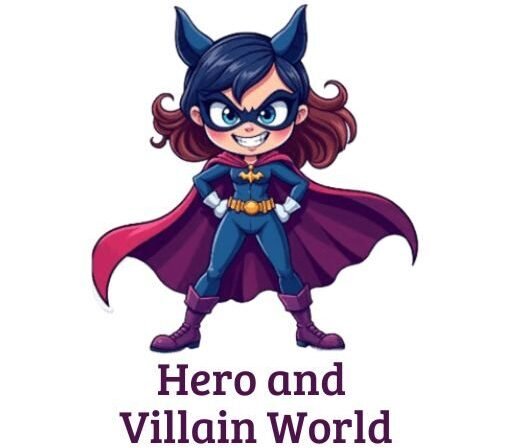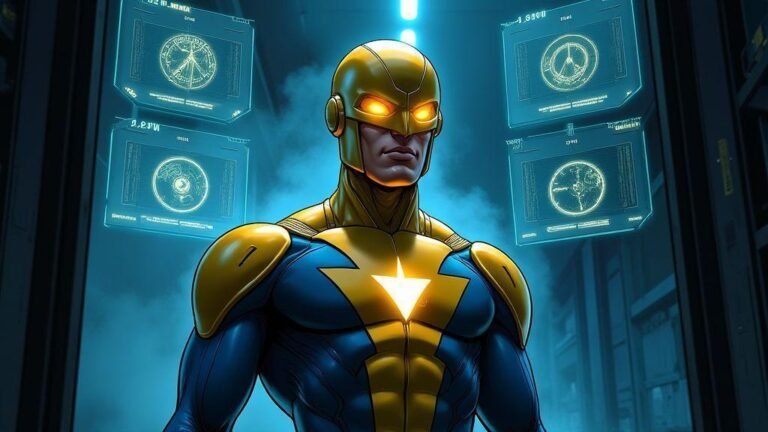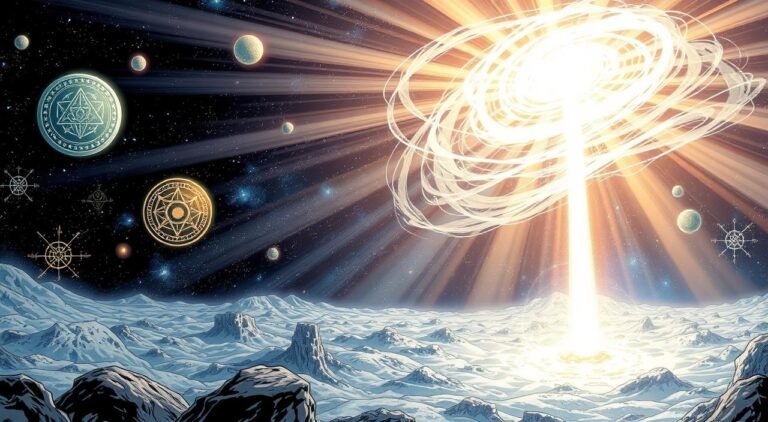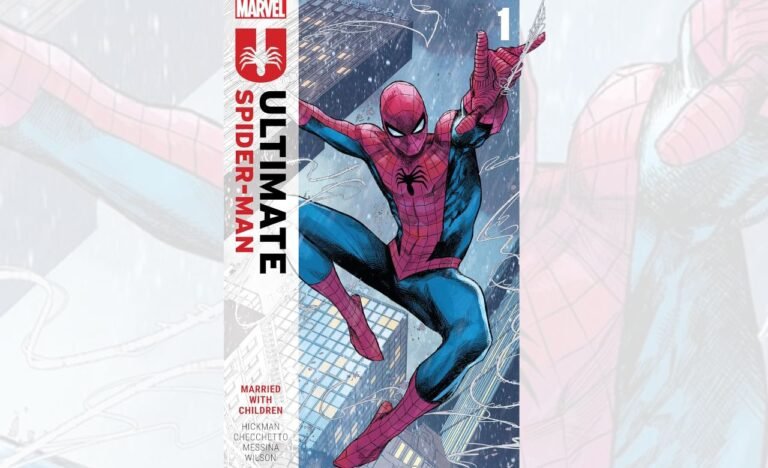Green Lantern: Emerald Twilight – The Tragic Fall and Redemption of Hal Jordan
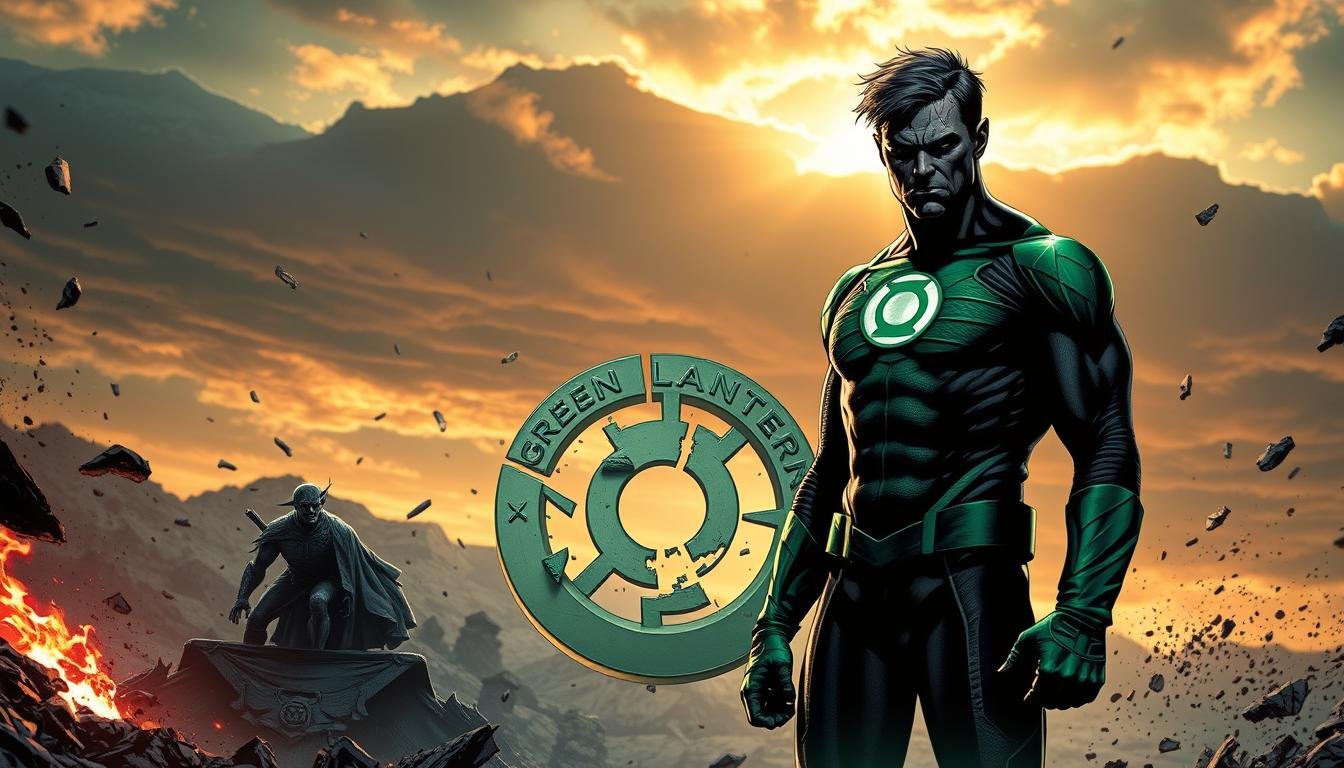
I still remember the cracked spine of my borrowed comic book, its pages whispering a tale that changed how I saw heroism. The 1990s reshaped storytelling, and one series dared to ask: what happens when an icon breaks? That’s when I met a character whose struggle mirrored life’s messy truths—triumph, failure, and the courage to rebuild.
“Emerald Twilight” isn’t just ink on paper. It’s a raw exploration of power’s weight. I’ll never forget how this arc made me question everything I knew about heroes.
The protagonist’s journey from revered leader to shattered soul felt uncomfortably human, like watching a friend spiral.
DC Comics’ bold 90s reboots gave creators freedom to take risks. This story used that space to dissect legacy through a lens darker than cosmic space. Parallax wasn’t just a villain origin—it became a metaphor for how grief can eclipse even the brightest light.
Why does this matter now? Because we all face moments where hope flickers. This book taught me redemption isn’t about erasing mistakes, but choosing to rise after the fall. Let’s revisit that pivotal era together—not just as fans, but as travelers through shared human struggles.
Introduction: My Personal Journey into the Green Lantern Saga
It all began with a rainy afternoon and a dusty box of comics hidden under my dad’s old desk. Inside lay issues featuring the Green Lantern Corps—intergalactic guardians whose stories blended cosmic wonder with human fragility.
Their oath about overcoming fear became my childhood mantra.
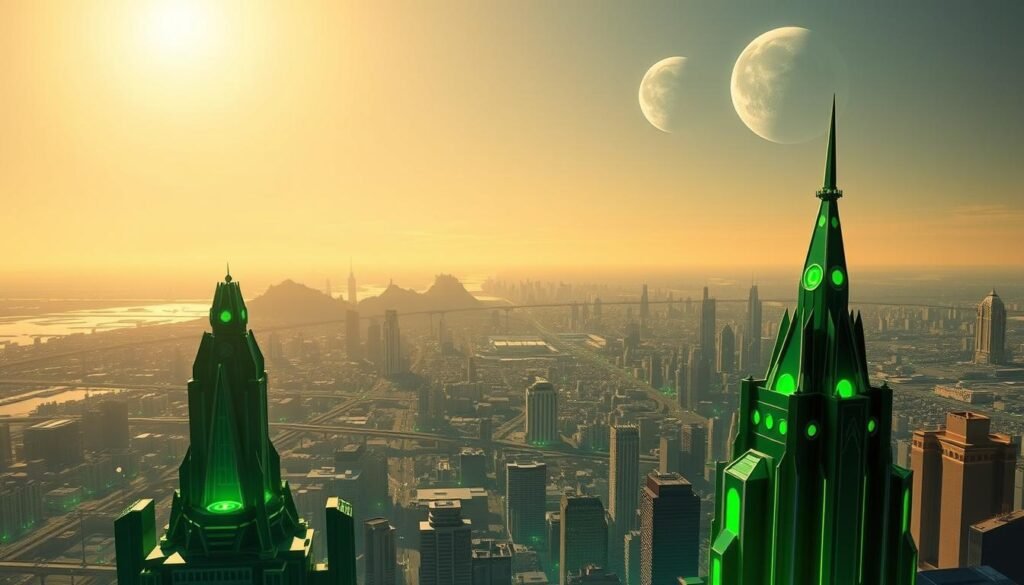
Background and Inspiration
Coast City fascinated me long before its tragic fate. As a young man, I sketched its skyline from comic panels, imagining life in a place where heroism felt tangible.
The Corps’ ideals mirrored my father’s lessons about resilience—lessons that deepened when real-life losses made fiction feel painfully relatable.
Time reshaped my understanding. Re-reading those stories as an adult, I saw layers I’d missed—the way Coast City symbolized hope’s fragility, or how a man could embody both unwavering courage and crushing doubt.
These themes sparked late-night debates with friends, bonding over coffee and conflicting theories about willpower’s limits.
Purpose Behind This Case Study
This analysis isn’t just about a transformative story arc. It’s about how fiction mirrors our struggles. Through the lens of the Green Lantern Corps, I’ll explore how loss can unravel even the noblest hero—and why rebuilding matters more than perfection.
Join me in unpacking a narrative that dared to let its protagonist fall. Because sometimes, seeing a young man stumble teaches us more than watching him soar.
Setting the Stage: DC Comics’ Bold 90s Reboots
Crackling with creative energy, DC’s 90s era tore down old walls to build something riskier and real. Editors didn’t just tweak costumes—they rewrote legacies. This wasn’t your dad’s comic book universe anymore.

Editorial Changes and Universe Overhauls
I once interviewed a former DC editor who called 1993 “the year the rulebook burned.” Massive event series like Reign of the Supermen forced readers to question what heroism meant. Key issues saw:
- Superman’s death sparking four replacements
- Batman’s spine shattered in Knightfall
- Entire cities destroyed to test moral codes
These choices reshaped icons into flawed beings. When the Lantern Corps faced similar upheaval later, fans were primed for emotional gut-punches.
| Series | Turning Point | Lasting Impact |
|---|---|---|
| Superman | Reign of the Supermen | Legacy hero blueprint |
| Batman | Knightfall Saga | Vulnerability in armor |
| Green Lantern | Emerald Twilight | Moral complexity |
The Role of Crisis and Legacy
Previous event crossovers like Crisis on Infinite Earths cleared debris for new growth. By the 90s, that growth turned thorny. Creative teams used continuity resets to explore darker psychology—perfect soil for Emerald Twilight’s tragedy.
Reboots became DC’s language for asking hard questions. What breaks a hero? Can legacy survive failure? These themes still echo in today’s issues, proving the 90s shakeups weren’t just shock value—they were narrative evolution.
The Breakdown: Examining Hal Jordan’s Tragic Fall
Comic books often show heroes rising from tragedy, but few dare to depict their collapse. This story doesn’t just break its protagonist—it dissects how even cosmic power crumbles when grief becomes a black hole.
Coast City’s Destruction and Personal Loss
The annihilation of Coast City wasn’t merely a plot device—it was emotional napalm. I’ve stared at those panels for hours, tracing how one man’s world disintegrates. When seven million lives vanish instantly, what’s left for someone sworn to protect them?
Power defines these guardians, but here it becomes a curse. Each page shows his grip slipping—decisions made in anguish, not courage. Moments meant for heroism twist into desperation: stealing energy from allies, ignoring oaths.
Death’s shadow followed him long before this catastrophe. Friends, mentors, now an entire city—each loss carved deeper cracks. I’ve debated endlessly: would anyone withstand that torment? His actions—choices he would never make—reveal a chilling truth.
The tragedy lies in what he would’ve done before. The leader who inspired galaxies now kneels in rubble, following a path he would have condemned. His fall teaches that power without hope becomes its own prison.
green lantern emerald twilight hal jordan: A Deep Dive into the Case Study
Creative risks often leave scars, but Ron Marz’s typewriter bled something fiercer than ink when reshaping DC’s cosmic guardian. This storyline didn’t just shock readers—it rewrote the rules for heroism in comics.
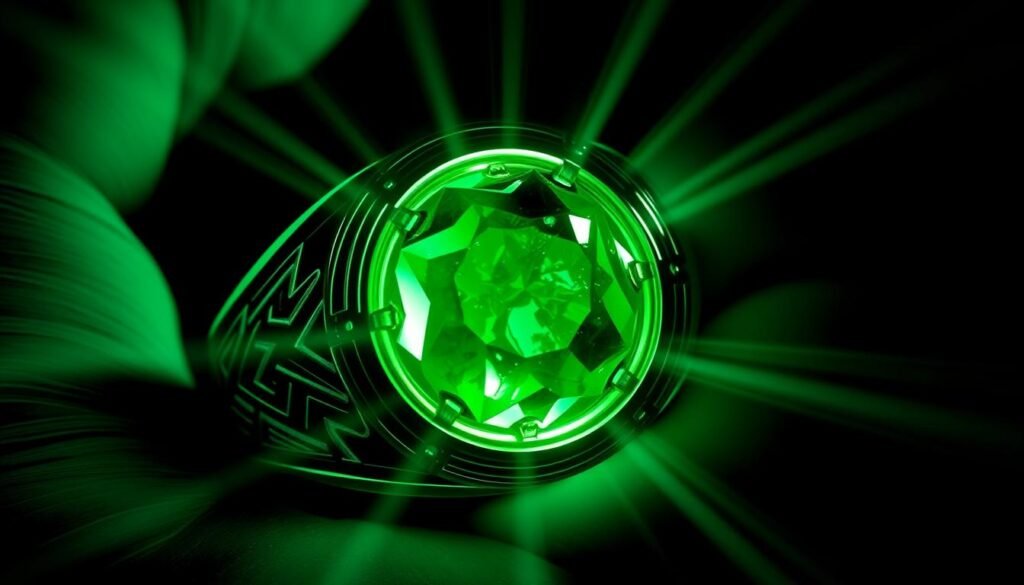
The Lead-Up to Emerald Twilight
Writers faced a dilemma: how to make audiences accept a beloved hero’s downfall. Ron Marz crafted Hal’s spiral like a symphony—each loss compounding until the melody broke. Key decisions included:
- Depicting the ring as both weapon and mirror
- Letting grief eclipse duty incrementally
- Using other Green Lanterns as moral counterpoints
Gerard Jones’ earlier work laid groundwork, but Marz turned the knife. Conversations with editors revealed they knew the risks—alienating fans to explore deeper truths.
Transformative Moments in the Storyline
One panel still haunts me: the ring cracking as Hal’s hands tremble. Power that once built cities now fueled destruction. The moment he seized the Central Battery wasn’t just rebellion—it was a scream into the void.
These scenes take place in rapid succession, each more desperate than the last. Guardians’ stern faces, allies’ betrayed stares—every detail amplified the tragedy.
The Shift from Heroism to Tragedy
What makes a villain? Marz argued it’s not evil, but abandoned hope. Hal’s actions mirrored real-world spirals—addiction, rage, isolation. The ring, once a beacon, became a shackle.
But here’s what fascinates me: even at his worst, glimpses of the hero remained. That complexity made readers argue for decades—was this betrayal or brokenness? Either way, it changed how writers approach fallible protagonists forever.
The Impact: Legacy, Editorial Shifts, and Fandom Reactions
I once watched a convention panel dissolve into chaos over coffee-stained Justice League issues. That’s when I realized stories aren’t just told—they’re lived. The 90s reshaped how fans engage with fiction, turning readers into passionate defenders of their guardians universe.
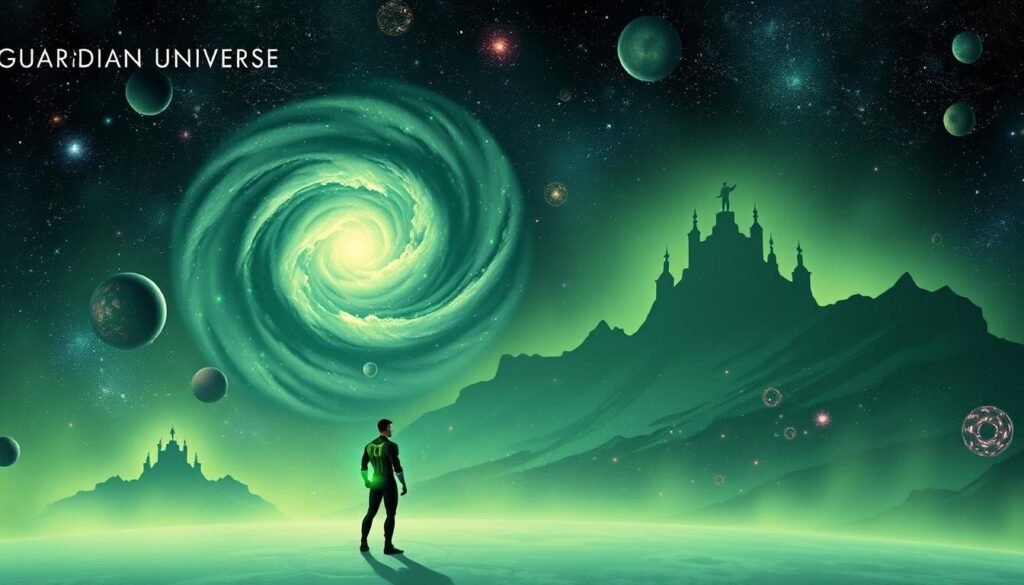
Analyzing Fan Backlash and Nostalgia
Groups like HEAT (Hal’s Emerald Attack Team) didn’t just send letters—they launched campaigns. The central power battery’s destruction became a rallying cry, symbolizing what many saw as DC shattering its own legacy. I’ve held those angry zines—their ink practically steaming with betrayal.
Debates raged about whether city destruction justified a hero’s fall. Arguments over Hal’s girlfriend Carol Ferris’ role split forums. Even Green Arrow’s tense interactions with him got dragged into theories about moral relativism.
Long-Term Effects on the DC Universe
Those editorial choices still echo. Kyle Rayner’s rise as the last guardians universe torchbearer forced creative risks. The Justice League dynamics shifted permanently—trust became scar tissue.
Today, seeing heroes wrestle with trauma feels standard. But back then? Watching the central power structures crumble taught us that even cosmic icons aren’t bulletproof. Those 90s scars became guideposts for modern character arcs—proof that brokenness can birth better stories.
Lessons Learned: Embracing Redemption Amid Tragedy
Twenty-three cents. That’s what the worn issue cost at a garage sale, its pages chronicling a hero’s rebirth.
Kyle Rayner’s first appearance taught me that redemption isn’t about erasing scars—it’s learning to wear them with purpose. Through years of rereads, I’ve found wisdom in how DC let light pierce their darkest hour.
Personal Reflections on Loss and Renewal
The shattered power battery became my metaphor for personal collapse. Like Hal, I’ve knelt in life’s debris—but Kyle’s journey showed rubble can be raw material.
His artist’s mindset transformed destruction into creation, a way forward I’ve borrowed during career crashes and broken relationships.
Carol Ferris’ evolution stunned me most. She wasn’t just a love interest—she became the steady hand guiding Ferris Aircraft through storms. Her strength whispered: “Heroism thrives in boardrooms too.”
Three truths emerged from these years of analysis:
- Legacy isn’t a crown—it’s seeds planted in cracked soil
- The power battery’s reconstruction proved broken systems need fresh architects
- Kyle Rayner’s rookie mistakes made his triumphs feel human, not cosmic
Today, I see Hal’s fall and Kyle’s rise as two parts of one story—the way shattered glass forms mosaics. Carol’s resilience taught me that supporting roles often shape sagas most. Redemption, I’ve learned, isn’t about rewriting history. It’s building better futures from its fragments.
Conclusion
Twenty years later, this story still burns bright in my mind. The shattered battery and broken rings taught me that even legends can falter—and that’s okay. Every guy with power faces moments where the weight feels crushing.
What makes these comics timeless isn’t just cosmic battles. It’s the raw idea that heroes aren’t statues—they’re people who rebuild. The creative minds behind this arc didn’t just change a place in DC’s universe. They redefined how we view failure.
Today’s storytellers still borrow from this blueprint. That cracked battery? It’s now a symbol of starting over. Those rings? Reminders that light survives darkness.
For me, this story isn’t about a fallen guy. It’s about finding courage when your world explodes. Every time I doubt my path, I remember: even broken comics characters can inspire new ideas. And that’s the real power here.
FAQ
Q: Why did DC Comics decide to turn Hal Jordan into a villain?
A: I think the 1990s were a time of bold risks in comics. Editorial wanted to explore darker, more human flaws in iconic heroes. After losing everything in Coast City’s destruction, Hal’s breakdown felt like a raw, emotional path that challenged the idea of unwavering heroism.
Q: How did fans react to Kyle Rayner replacing Hal Jordan?
A: Initially, there was major backlash. Many saw Kyle as a “90s gimmick” with his edgy redesign. But over time, his relatability as a young artist learning responsibility won people over. I still miss Hal’s legacy, but Kyle’s journey added fresh layers to the Corps.
Q: Was Coast City’s destruction inspired by real-world events?
A: A> While not directly stated, the tragedy mirrored themes of grief and helplessness many face. Writer Ron Marz used it to push Hal beyond his limits, making his fall eerily human. It’s a reminder that even heroes can shatter under unimaginable loss.
Q: How does Emerald Twilight tie into larger DC Universe events?
A: It paralleled DC’s “legacy” era, like Reign of the Supermen. By dismantling the Corps and Guardians, it created a vacuum for new heroes. This reshaped cosmic storytelling for years, influencing crossovers like Zero Hour and Kyle’s role in Justice League titles.
Q: Did Hal’s redemption feel earned after his actions?
A: Personally, it took time. His return in Green Lantern: Rebirth retconned some choices, blaming Parallax for his fall. While controversial, it honored his legacy by merging his humanity with mythos. Redemption stories are messy, but Hal’s felt… necessary.
Q: What makes this storyline relevant today?
A: It’s a cautionary tale about trauma and power. Modern arcs like Sinestro Corps War or Jessica Cruz’s anxiety build on its themes. Heroes aren’t infallible—and that’s okay. We need stories where broken people find light again.
